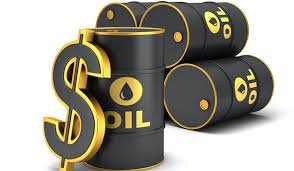Global consumption of liquid fuels is forecast to reach 102.2 million barrels per day in 2024, driven primarily by growth in countries like India and China, reflecting trends in economic activity, the U.S. Energy Information Administration said in its Short-Term Energy Outlook.
Markets also awaited clarity on the U.S. Federal Reserve’s plans to raise interest rates after Fed Chair Jerome Powell avoided comments on monetary policy and the economy at a symposium. Traders are now looking to U.S. CPI data on Thursday for indications on the near-term outlook.
Thursday’s data “could easily clarify the direction of the financial and oil markets for weeks to come”, said Tamas Varga of oil broker PVM.
He said the dollar would fall if inflation came in below expectations or was below the November reading, Varga added.
The dollar hovered around its weakest level in seven months. A weaker dollar can boost demand for oil, as greenback-denominated commodities become cheaper for holders of other currencies.
On Monday, both WTI and Brent climbed 1% after China, the world’s biggest oil importer and second-largest consumer, opened its borders over the weekend for the first time in three years.
China also issued a second batch of 2023 crude import quotas, raising the total for this year by 20% from last year.
“Crude is trying to solidify a bottom, as China has lifted most restrictions to international travel and trade,” said Dennis Kissler, senior vice president of trading at BOK Financial.
But analysts said a revival of Chinese demand may only give oil prices limited support under downward pressure from the global economy.
“Considering that the recovery of consumption is still at the expected stage, the oil price will most likely remain low and range-bound,” said analysts from Haitong Futures.
Barclays bank highlighted a $15-25 per barrel downside to its $98 per barrel Brent forecast for 2023 if a “slump in global manufacturing activity worsens similar to the 2009-09 episode.”
Goldman Sachs expects that the growing ability of the Organization of the Petroleum Exporting Countries (OPEC) to raise prices without hurting demand too much will limit downside risks to its bullish oil forecast for 2023.
Separately, U.S. stockpiles of crude oil and distillates were expected to have fallen last week, a Reuters poll showed.
Industry group American Petroleum Institute is due to release data on U.S. crude inventories at 4:30 p.m. ET, followed by EIA data on Wednesday.
Follow us on twitter




